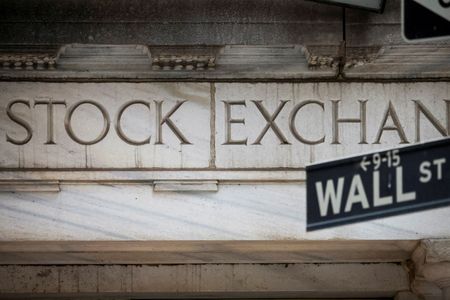By Jamie McGeever
ORLANDO, Fla. (Reuters) – The mood at the annual ‘Miami hedge fund week’ gatherings this week was as bright as the winter sunshine, with one notable dark cloud on the 2023 horizon: U.S. stocks.
The S&P 500 has just had its first January rise since 2019 – and its second best start to a year since 1989 – while the Nasdaq’s 10.7% surge marked its best January since 2001. But the message from Miami was pretty clear: don’t chase the rally.
‘FOMO’ may yet set in if the move continues, and the Fed’s apparent green light on Wednesday to further upside will no doubt have unnerved some of the bears.
But right now in the hedge fund and alternative market investor community, reluctance to get sucked in is trumping fear of missing out. And there is no shortage of reasons why – inflation, weak earnings, squeezed margins, recession, ‘higher for longer’ interest rates.
An aversion to equities may come as little surprise given these investors’ bias towards the private, alternative, less liquid and more speculative parts of the investment universe that, in theory, offer higher returns.
Yet they were bullish on bonds, including Treasuries, the safest and most liquid asset of them all.
“Either inflation comes down and you get hit on margins, or it doesn’t and the Fed hits you because it doesn’t cut (rates),” Matt Smith, investment director at Ruffer LLP, told Reuters. “We are at our lowest equity weight.”
Money managers’ exposure to U.S. equities is historically low, and a ‘bullish Europe/bearish America’ narrative has gained prominence in recent weeks. According to Bank of America, investors are the most underweight U.S. stocks since 2005.
Given this stretched positioning, Wall Street’s current bounce is probably being driven by an element of short covering as much as fresh capital being poured in.
(BofA fund manager survey – US stocks https://tmsnrt.rs/3JGaYIq)
EARNINGS ROADBLOCK
Some 3,500 people from across the investment and risk spectrum descended on the iConnections Global Alts 2023 conference in Miami this week – hedge funds, asset allocators, family offices, digital and private market participants, asset managers, wealth managers and alternatives specialists.
Money managers at some of the largest U.S. funds and investment firms overseeing trillions of dollars of assets were in attendance, and speakers included billionaire investors Mark Cuban, Jim Chanos, Marc Lasry and Kim Kardashian.
The number of delegates was up significantly from last year’s total of around 2,300, evidence that, after a year of terrible returns for many, there is a lot of money to be put to work.
Despite massive Fed tightening and the prospect of liquidity drying up significantly this year, investors see opportunities out there. But not on Wall Street – either the market capitulates because the economy goes into reverse, or it tanks because inflation forces the Fed to keep interest rates high.
“Both roads lead to re-priced assets,” Chamath Palihapitaya, CEO of Social Capital and former Facebook executive, told the conference.
Earnings was frequently mentioned as the main reason for caution. Estimates are coming down, but not far or fast enough.
(S&P 500 earnings growth estimates https://fingfx.thomsonreuters.com/gfx/mkt/lbpggbbejpq/EPS.jpg)
(S&P 500 total earnings estimates https://fingfx.thomsonreuters.com/gfx/mkt/lgpdknnzxvo/EPS2.jpg)
The consensus forecast for total 12-month forward earnings per share of S&P 500 companies is $225, the lowest in a year but still near July’s all-time high of $238. Forward 12-month earnings growth estimates have fallen to 3.5% from 10% a year ago, but they remain positive.
This suggests equity investors are betting heavily on the Fed successfully engineering a ‘soft landing’ – possible, but far from certain.
Yet amid the gloom, there were glimmers of positivity.
Mike Wilson, chief U.S. equities strategist at Morgan Stanley, has been one of the most vocal – and accurate – Wall Street bears over the past year.
He is still bearish in the short term, even quipping that bonds are a better buy than stocks right now. Earnings expectations will inevitably fall and the S&P 500 will re-test its October lows.
Then it rebounds.
“I think we can trade at the low 3,000s – but we won’t stay there very long. There’s too much capital out there,” Wilson said.
(The opinions expressed here are those of the author, a columnist for Reuters.)
(Reporting by Jamie McGeever; Editing by Chizu Nomiyama)

